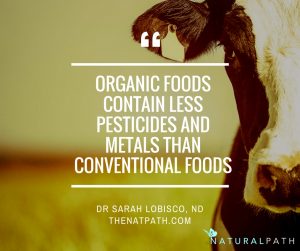The Recent Dietary Trend That Is Causing Waves
In Part I, I discussed the current obesity epidemic and the unsuccessful attempts to mitigate it. Obviously, with the weight of the world on the rise, what we are doing isn’t working. Many experts are beginning to realize the old advice of “eat less, exercise more,” isn’t cutting it. Furthermore, microscopically zeroing in on one food group as “good” or “bad” isn’t working either. In this blog, I’ll discuss the latest example or dietary friend versus foe in relationship to saturated fat.
The Fat Attack Comeback
 Recently, the “fat attack” has been under scrutiny in science.1-3,5-6 According to a 2015 meta-analysis of six trials published before 1983 in the journal, Open Heart, researchers found little evidence to support that saturated fat is associated with cardiovascular disease and all-cause mortality. In their discussion, the authors report that the studies for dietary change may be more supportive of multiple lifestyle changes verses a cure-all diet for heart health. It was concluded: “Dietary recommendations were introduced for 220 million US and 56 million UK citizens by 1983, in the absence of supporting evidence from RCTs.”1In other words, the authors were stating, “hey, we see association, but it may be weak and there’s no proof it’s the actual cause!”
Recently, the “fat attack” has been under scrutiny in science.1-3,5-6 According to a 2015 meta-analysis of six trials published before 1983 in the journal, Open Heart, researchers found little evidence to support that saturated fat is associated with cardiovascular disease and all-cause mortality. In their discussion, the authors report that the studies for dietary change may be more supportive of multiple lifestyle changes verses a cure-all diet for heart health. It was concluded: “Dietary recommendations were introduced for 220 million US and 56 million UK citizens by 1983, in the absence of supporting evidence from RCTs.”1In other words, the authors were stating, “hey, we see association, but it may be weak and there’s no proof it’s the actual cause!”
Lately, the evidence continues to abound that saturated fat may not as horrific for health as once believed. Here are some of the latest trials that discuss the impact of this nutrient and some limitations on broad sweeping conclusions based on a single study or analysis.
The Type of Fat
In the last article, I discussed an association study that linked saturated fat to heart disease.2 However, I also pointed out that the study was observational, and could not be extrapolated to mean saturated fat was causing heart disease. Furthermore, I mentioned that it’s almost impossible to consider all the factors that can affect results with studies that don’t have a control group.
For example, in a similar study design, researchers did take into account an additional aspect. It aimed to assess if dietary saturated fatty acids (SFA) and incident of coronary heart disease (CHD) was linked to the typeof SFA. The study included 4722 men and women older than 55 years from the Rotterdam Study, starting at a baseline in 1990-1993. The authors used a food frequency questionnaire and multivariable Cox regression analysis to look for associations and concluded that there was an effect based on type of SFA consumed, with palmitic acid being linked to CHD. The study stated:
In this Dutch population, we observed that a higher intake of palmitic acid, which accounts for ≈50% of the total SFA intake, was associated with a higher CHD risk, as was substitution of total SFA with animal protein. Nevertheless, we found no association between total SFA intake and CHD risk, which did not differ by food source.3
Again, observational studies have their limits,4 and this one did as well. It was based on one population which could have differing predispositions, unique needs, and environmental interactions. It also used a food frequency questionnaire which is not the most reliable. Finally, as mentioned the analytical method used does not imply causality (only association) and only accounts for the confounders assessed and realized by the authors.4
The Cow Factor- Is Butter Back?
“Is Butter Back?” More and more health gurus and experts are sharing in the delight of the “Big Fat Surprise”5 and are touting the advantage of butter spread on veggies and mixed into morning coffee. Scientists are paying attention and aiming to answer the question- Is this another dietary fad or a wonderful dietary insight?
A recent study aimed to systematically review and meta-analyze the association of butter consumption with all-cause mortality, cardiovascular disease, and diabetes in a general population (to see if the comeback of butter was legit). The authors searched for studies up to May 2015 using nine databases and included prospective cohorts or randomized clinical trials. This article then could have had the potential “hold more weight” than association studies, due to the fact that that biases and differences in reporting were considered in the review. Unfortunately; however, no randomized trials were included, leaving causation once again a pipe-dream. Out of the nine studies reviewed, little risk for bias or heterogeneity was found, which was a plus. The authors concluded:
This systematic review and meta-analysis suggests relatively small or neutral overall associations of butter with mortality, CVD, and diabetes. These findings do not support a need for major emphasis in dietary guidelines on either increasing or decreasing butter consumption, in comparison to other better established dietary priorities; while also highlighting the need for additional investigation of health and metabolic effects of butter and dairy fat.6
So, once again, another study has left the confused health consumers shaking their heads as their butter shelves rapidly switch from butter, then to smart balance, and then back to butter, then to coconut butter…which doesn’t really taste like butter… so back to smart balance…you get the picture…
The Mega- Meta-Analysis That Caught My Hungry Eye
Probably, one of my favorite articles on this topic, because it was the most comprehensive and DID include controlled studies, was a 2010 review study. It consisted of analyzing randomized control trials (RCTs) related to lipid and non-lipid risk factors for heart disease risks, prospective trials on saturated fat and health outcomes, and RCTs evaluating heart disease and metabolic outcomes of saturated fatty acid consumption in humans, including “whether effects vary depending on specific SFA chain-length; on the replacement nutrient; or on disease outcomes evaluated.”7 Why is this important?
As mentioned, a large amount of recommendations in public health (and media) tend to base conclusions on animal studies or epidemiological studies. This may not translate to human beings or prove causation. Although, the more studies provide similar observations, the stronger the connection seems to be, accounting for all factors is very difficult.
The authors of this review found that saturated fat wasn’t a big player in heart disease and had inconsistent results in metabolic diseases (e.g., stoke, insulin resistance, and vascular function). An example of a “mixed result” was found in the population with insulin resistance. The researchers found that the controlled studies showed that SFA consumption inconsistently affects insulin resistance; however, in prospective studies (observational over time), SFA has not been associated with incident diabetes.7 This gives more weight to the idea that SFA may not affect insulin resistance.
When the authors analyzed different types of saturated fatty acids (SFAs), monounsaturated fatty acids (MUFA), and carbohydrates (CHO) in relationship to outcomes, they also saw differences in results. It was found that total cholesterol to HDL cholesterol was not significantly affected by 2 types of saturated fats, myristic or palmitic acid. There was a trend (not statistically significant) of decreasing the ratio (higher HDL) by steric acid, and significantly decreasing it by lauric acid (found in coconut oil). There was insufficient evidence to determine how other saturated fats effected other risk pathways or disease endpoints. The authors reported their findings as follows:
Based on consistent evidence from human studies, replacing SFA with polyunsaturated fat modestly lowers coronary heart disease risk, with ~10% risk reduction for a 5% energy substitution; whereas replacing SFA with carbohydrate has no benefit and replacing SFA with monounsaturated fat has uncertain effects. Evidence for the effects of SFA consumption on vascular function, insulin resistance, diabetes, and stroke is mixed, with many studies showing no clear effects, highlighting a need for further investigation of these endpoints. Public health emphasis on reducing SFA consumption without considering the replacement nutrient or, more importantly, the many other food-based risk factors for cardiometabolic disease is unlikely to produce substantial intended benefits.7
The authors conclusion that summarized their findings was comprehensive (and long) and discussed the importance of nutrient substitution (phytochemicals and flavonols found in monounsaturated fatty acids), individual susceptibility (those with insulin resistance who may not be able to tolerate carbohydrate substitution), and analyzing disease endpoints, not just markers (such as mortality rates versus cholesterol numbers.). Here’s a brief excerpt:
Additional investigation of effects of SFA consumption on blood pressure, endothelial function, insulin resistance, diabetes, and stroke (plus stroke subtypes) is also needed, including consideration of potential variation depending on both the replacement nutrients and specific chain-length SFA under consideration. Future research should also evaluate the health effects of specific foods consumed, i.e., SFA intake from different meats versus dairy versus tropical fats, as well as how individual factors, such as age, sex, lifestyle factors, predisposition to insulin resistance, or genetic variation, may alter such responses.7
Bottom line: The type of fat, nutrient substitution, and health status of the individual all showed an interaction in this comprehensive review.
However, one area that may be a factor in nutrient availability is the quality of fat related to organic versus conventional production of dairy and meat. A recent study reported that organic dairy did differ in nutritional profiles from conventional dairy. More specifically, omega-3 polyunsaturated fats were 56% higher, ALA (α-linolenic acid) was 69% higher, EPA+DPA+DHA were 57% higher, and CLA (conjugated linolenic acid) was 41% higher in organic milk.8 Furthermore, another study found that organic foods contained less pesticides and metals than conventional foods, which could also impact health outcomes.9
The Quality of Meat and Healthy Lifestyle Factors
Another big problem with trying to find one dietary “villain” or “hero” is that it some of the “offenders” might be regarded as “guilty by association.”
I wrote about this when in October 2015, the IARC (International Agency of Research on Cancer), a part of the World Health Organization (WHO), warned the public that consumption of processed meat and red meat could be linked to cancer.10-11 This made the media release some not-full-truth headlines linking saturated fat and meat to cancer. However, their reviews did not all take into account:
- The way the meat was raised, such as CAFOs (confined animal feeding operations) and their use of hormones, antibiotics, and GMOs.
- How meat was processed and prepared, processing increases the level of aromatic amines and aromatic hydrocarbons in the food which can cause damage to human DNA modulating colon cancer risk.
- The health of the meat consumers, specifically the population of gut microbes in someone’s belly causes differences in the breakdown of specific components of meat.12-13 For example, studies in 2013 linked the production of a potentially harmful metabolite, trimethylamaine-N-oxide (TAMO), to meat eaters with compromised guts. This was not found in vegetarians who had a different microbiome or in meat eaters with a sterile belly (who took antibiotics).12
More recently, there has been more studies to support that it may not be the protein and fat that is the issue, but the combination of poor lifestyle with the quality of the meat, that is the issue.14-18
The Big (Lifestyle) and Dietary Picture
One recent prospective cohort study assessed animal and plant intake with food frequency questionnaires within a two-year period using US health care professionals. It included 131 342 participants from the Nurses’ Health Study (1980 to end of follow-up on June 1, 2012) and Health Professionals Follow-up Study (1986 to end of follow-up on January 31, 2012).14
Remember that first study I mentioned that touted the “badness of saturated fat?” The authors suggested replacing it with good sources of carbohydrates and polyunsaturated fats could reduce CHD.2
In this trial, the authors assessed for something this previous study didn’t, how lifestyle and dietary factors interacted with animal protein (a source of saturated fat). They reported that negative associations with animal protein were confined only to those with at least one unhealthy lifestyle factor:
After adjusting for major lifestyle and dietary risk factors, animal protein intake was weakly associated with higher mortality, particularly cardiovascular mortality (HR, 1.08 per 10% energy increment; 95% CI, 1.01-1.16; P for trend = .04), whereas plant protein was associated with lower mortality (HR, 0.90 per 3% energy increment; 95% CI, 0.86-0.95; P for trend < .001). These associations were confined to participants with at least 1 unhealthy lifestyle factor based on smoking, heavy alcohol intake, overweight or obesity, and physical inactivity, but not evident among those without any of these risk factors. Replacing animal protein of various origins with plant protein was associated with lower mortality. In particular, the HRs for all-cause mortality were 0.66 (95% CI, 0.59-0.75) when 3% of energy from plant protein was substituted for an equivalent amount of protein from processed red meat, 0.88 (95% CI, 0.84-0.92) from unprocessed red meat, and 0.81 (95% CI, 0.75-0.88) from egg.
Conclusions and Relevance: High animal protein intake was positively associated with mortality and high plant protein intake was inversely associated with mortality, especially among individuals with at least 1 lifestyle risk factor. Substitution of plant protein for animal protein, especially that from processed red meat, was associated with lower mortality, suggesting the importance of protein source.14
The leading researcher stated the following to Science Daily:
“While we expected we might find the associations to be weaker in the healthy lifestyle group, we did not expect them to completely disappear,” says Song. “But when we looked deeper into the data, we found that — at similar levels of animal protein intake — those in the unhealthy lifestyle group consumed more red meats, eggs and high-fat dairy, while the healthy lifestyle group consumed more fish and poultry. So we suspect the different sources of animal protein between the two groups may contribute to the stronger results in the unhealthy lifestyle group.”15
This study shows the importance of considering as many factors as possible with observational studies as well as providing some evidence that some foods can be protective). Reuter’s reported the following spin on the same study:
People who eat more protein from plants and less from animals may live longer even when they have unhealthy habits like heavy drinking or smoking, a large U.S. study suggests.
The findings suggest that when it comes to protein, where it comes from may be just as important as how much people eat, said lead study author Dr. Mingyang Song, a researcher at Harvard University and Massachusetts General Hospital in Boston.
“Plants are a better source than animal products,” Song said by email.
“If people do have to choose among animal products, try to avoid processed red meat and choose fish or chicken instead,” Song added.16
Interesting, some headlines regarding this study still tout the ills of saturated fat. However, if you read on in the article, there’s a caveat. Here’s the body of the write up from Health Day:
Interestingly, the increased risk of death linked to animal protein only occurred in people with other unhealthy lifestyle traits, such as obesity, heavy drinking, smoking or lack of exercise, the study authors noted. The association disappeared in participants with a healthy lifestyle. And the study was not designed to prove that eating a lot of red meat would cause an increased risk of early death.17
A Smart Way Out of a Big Problem
So, is fat back? Can you eat butter? Probably, but I’m really not sure.
I don’t know your current health status, your genetics, your ethnicity, what quality food your buying, and how your digestion is “primed” for fat absorption. However, a naturopathic doctor could help you out with this and assist you with finding a plan that is right for you. Who wants to sort through the confusing generalizations with mixed results and confounding factors alone?
This is why we need a new model to stop obsessively focusing on one nutrient in isolation as good or bad. Right now, saturated fat and butter is back. However, without considering all the other factors in healthy weight, which I discussed here, it won’t do much for our nation to simply substitute the margarine for butter. (Though it will help.)
Thankfully, just recently, this new method of individualized attention got attention. According to Science Daily:
Existing models for measuring health impacts of the human diet are limiting our capacity to solve obesity and its related health problems, claim two of the world’s leading nutritional scientists in their newest research.
In the latest edition of Annual Review of Nutrition, Professor David Raubenheimer and Professor Stephen Simpson from the University of Sydney’s Charles Perkins Centre call for a radical rethinking of human nutrition science through a new framework called ‘nutritional geometry’ — the culmination of more than 20 years of research in the field.
‘Nutritional geometry’ considers how mixtures of nutrients and other dietary components influence health and disease, rather than focusing on any one nutrient in isolation. It is hoped this new model will assist health professionals, dietitians and researchers to better understand and manage the complexities of obesity.
“Our framework throws down the gauntlet to the whole field of human nutrition. It shows that the prevailing focus on single nutrients is not able to help us understand complex chronic diseases, and that an approach based on nutrient balance can help solve the problem,” said Professor Stephen Simpson, Academic Director of the Charles Perkins Centre…19
And that, dear Watson, is what Naturopathic Doctors are here for!
 Sarah Lobisco, ND, is a graduate of the University of Bridgeport’s College of Naturopathic Medicine (UBCNM). She is licensed in Vermont as a naturopathic doctor and holds a Bachelor of Psychology from State University of New York at Geneseo. Dr. LoBisco speaks professionally on integrative medical topics, has several journal publications, and has completed her postdoctoral training as a certified functional medicine practitioner. Dr. LoBisco currently incorporates her training in holistic medical practices and conventional medicine through writing, researching, private wellness consultations, and through her independent contracting work for companies regarding supplements, nutraceuticals, essential oils, and medical foods. Dr. LoBisco also enjoys continuing to educate and empower her readers through her blogs and social media. Her recent blogs about living naturally in our complex world and on the applications of essential oils can be found at www.dr-lobisco.com and at www.saratoga.com/living-well. Her new book BreakFree Medicine is now available on Amazon and Barnes & Noble’s. More information can be found at http://dr-lobisco.com/dr-sarah-lobisco-breakfree-medicine/
Sarah Lobisco, ND, is a graduate of the University of Bridgeport’s College of Naturopathic Medicine (UBCNM). She is licensed in Vermont as a naturopathic doctor and holds a Bachelor of Psychology from State University of New York at Geneseo. Dr. LoBisco speaks professionally on integrative medical topics, has several journal publications, and has completed her postdoctoral training as a certified functional medicine practitioner. Dr. LoBisco currently incorporates her training in holistic medical practices and conventional medicine through writing, researching, private wellness consultations, and through her independent contracting work for companies regarding supplements, nutraceuticals, essential oils, and medical foods. Dr. LoBisco also enjoys continuing to educate and empower her readers through her blogs and social media. Her recent blogs about living naturally in our complex world and on the applications of essential oils can be found at www.dr-lobisco.com and at www.saratoga.com/living-well. Her new book BreakFree Medicine is now available on Amazon and Barnes & Noble’s. More information can be found at http://dr-lobisco.com/dr-sarah-lobisco-breakfree-medicine/
References:
- Harcombe Z, Baker JS, Cooper SM, et al. Evidence from randomized controlled trials did not support the introduction of dietary fat guidelines in 1977 and 1983: a systematic review and meta-analysis. Open Heart 2015; DOI:10.1136/openhrt-2014-000196.
- Li Y, Hruby A, Bernstein AM, Ley SH, Wang DD, Chiuve SE, et al. Saturated Fats Compared With Unsaturated Fats and Sources of Carbohydrates in Relation to Risk of Coronary Heart Disease: A Prospective Cohort Study. J Am Coll Cardiol. 2015 Oct 6;66(14):1538-48. doi: 10.1016/j.jacc.2015.07.055.
- Praagman J, De Jonge EAL, Kiefte-de Jong JC, Beulens WJ, Sluijs I, Schoufour JD, Hoffman A, van der Schouw YT, Franco OH, Dietary Saturated Fatty Acids and Coronary Heart Disease Risk in a Dutch Middle-Aged and Elderly Population [abstract]. Arteriosclerosis, Thrombosis, and Vascular Biology [online]. July 14, 2016. doi: 10.1161/ATVBAHA.116.307578
- Wakkee M, Hollestein LM, Nijsten T. Multivariable Analysis. Journal of Investigative Dermatology. December 8, 2015. http://www.sciencedirect.com/science/article/pii/S0022202X15367774
- Nina Tiecholz. For Reporters. The Big Fat Surprise. http://thebigfatsurprise.com/reporters/
- Pimpin L, Wu JHY, Haskelberg H, Del Gobbo L, Mozaffarian D. Is Butter Back? A Systematic Review and Meta-Analysis of Butter Consumption and Risk of Cardiovascular Disease, Diabetes, and Total Mortality. PLoS One. June 29, 2016.http://dx.doi.org/10.1371/journal.pone.0158118
- Micha R, Mozaffarian D. Saturated Fat and Cardiometabolic Risk Factors, Coronary Heart Disease, Stroke, and Diabetes: a Fresh Look at the Evidence. Lipids. 2010;45(10):893-905. doi:10.1007/s11745-010-3393-4.
- Srednicka-Tober et al. Higher PUFA and n-3 PUFA, conjugated linoleic acid, α-tocopherol and iron, but lower iodine and selenium concentrations in organic milk: a systematic literature review and meta- and redundancy analyses. Br J Nutr.2016; 115(6), 1043–1060. doi: 10.1017/S0007114516000349.
- Barański M, Średnicka-Tober D, Volakakis N, et al. Higher antioxidant and lower cadmium concentrations and lower incidence of pesticide residues in organically grown crops: a systematic literature review and meta-analyses. The British Journal of Nutrition. 2014;112(5):794-811. doi:10.1017/S0007114514001366.
- Agency of Research on Cancer. IARC Monographs evaluate consumption of red meat and processed meat. Press Release. October 26, 2015. http://www.iarc.fr/en/media-centre/pr/2015/pdfs/pr240_E.pdf
- Foster R. Processed Meat Can Cause Cancer: WHO. Health Day. October 26, 2015. http://consumer.healthday.com/cancer-information-5/colon-cancer-news-96/processed-meat-can-cause-cancer-who-704606.html
- Graham M, Crooke R, Edwards PA, Hazen SL, Lusis AJ. Trimethylamine-N-oxide, a metabolite associated with atherosclerosis, exhibits complex genetic and dietary regulation (abstract). Cell Metab. 2013 Jan 8;17(1):49-60. doi: 10.1016/j.cmet.2012.12.011.
- Schwabe RF, Jobin C. The microbiome and cancer. Nature Reviews Cancer. 2013; 13, 800–812. doi:10.1038/nrc3610
- Song M, Fung TT, Hu FB, et al. Association of Animal and Plant Protein Intake With All-Cause and Cause-Specific Mortality. JAMA Intern Med.Published online August 01, 2016. doi:10.1001/jamainternmed.2016.4182.
- University of Adelaide. Meat consumption contributing to global obesity. Science Daily. August 1, 2016. https://www.sciencedaily.com/releases/2016/08/160801113654.htm
- Rapaport. Plant Protein May Help Offset Unhealthy Habits. Reuters Health Information. August 02, 2016. http://www.medscape.com/viewarticle/866888?src=wnl_mdplsnews_160805_mscpedit_wir&uac=146852BY&impID=1174074&faf=1.
- Thompson W. Lots of Red Meat, an Earlier Grave? Health Day. August 1, 2016. https://consumer.healthday.com/vitamins-and-nutrition-information-27/food-and-nutrition-news-316/could-lots-of-red-meat-shorten-your-life-span-713395.html
- Massachusetts General Hospital. High animal protein intake associated with higher, plant protein with lower mortality rate: Increased death risk primarily associated with red meats, eggs and dairy — not found among those with healthy lifestyle. Science Daily. August 1, 2016. https://www.sciencedaily.com/releases/2016/08/160801113654.htm
- University of Sydney. New Framework for Human Nutrition. Science Daily. August 1, 2016. https://www.sciencedaily.com/releases/2016/08/160801092952.htm

















